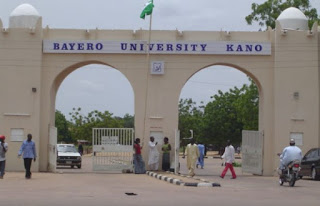JAMB Statistics Reveals Leading States in Law Admissions
;
Statistics
of the Joint Admission and Matriculation Board (JAMB) have shown that
admission into law in Nigerian universities between 2011 and 2015 were
dominated by candidates from Imo, Anambra and Delta states. These
three states were among the leading states with the highest number of Law
admission for the five years.
In 2011 Imo had 739 students admitted to study Law into various
universities, Anambra followed with 679 and Enugu was third with 593. Benue
came fourth with 558 and Ogun was fifth with 488 students.
In
2012, Imo emerged first with 551 students, Delta followed with 476 and Anambra
came third with 469, Rivers came fourth with 447. That year, Abia placed fifth
with 355 students admitted into Law.
In 2013, positions changed significantly,
with Delta taking the first position with 683 students. Imo dropped to second
with 630, while Rivers came third with 569. Anambra was fourth with 490 and Edo
, with 463, took fifth.
Anambra jumped to first position 2014 with
452, Delta dropped to second position with 430, Ogun jumped to third position
with 418. Osun was fourth with 381 and Edo took fifth with 373.
In 2015, Delta again took the first
position with 456 students. Ogun dropped to second with 419 while Imo dropped
to third position with 415. Enugu was fourth with 363 and Osun took fifth and
for the first time in five years, Anambra slumped to sixth position.
The states with the least number of
students admitted into law were FCT, Yobe, Zamfara and Jigawa.
FCT had the smallest number for four years
with only 29 students admitted into Law in 2011.
It had 14 students in 2012, 27 students in
2013, 20 students in 2014 and 19 students in 2015.
In 2011, Yobe had 25 students, followed by
Zamfara with 39 students. Katsina had 50 while Gombe had 51 students.
In 2014, Zamfara had 19 students, Sokoto
had 32 students, Jigawa had 39, and Katsina had 41.
In 2015, Zamfara had 28 students, Jigawa
had 33 students, Kebbi had 45 and Bayelsa had 47 students.
Commenting on the low figures in nothern
states, Ola Adeosun, a lawyer, blamed the political leadership in the north and
said it is essential for the federal government and civil societies to
sensitise people from the northern states on the need for quality education.
“You will recall that there was a time
that people from the South Eastern part of the country did not go to school,
they believed so much in learning a trade under a principal and getting settled
but the advent of Nnamdi Azikwe’s Eastern region education revolution changed
the story.
“Although it was not successful at first,
but they were able to sensitise the young minds on the importance of
education,” Mr Adeosun said.
Source:
premiumtimesng





Comments
Post a Comment
Disclaimer: All comments on this blog are the thought and opinion of blog readers, We will not in anyway be liable for them. Thank you.